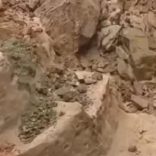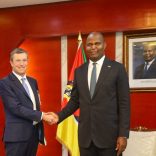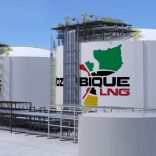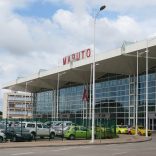Mozambique: Two dead in an illegal gold mine in Nhampassa, Báruè
Mozambique: Seminar discusses mining tax for community projects – AIM report

Picture: IMD - Instituto para Democracia Multipartidária on Facebook
Civil society and community groups have called for an increase in the funds ploughed back into community projects raised from the mining and hydrocarbon industries.
In 2014, the government adopted a law requiring companies in the extractive industries to allocate 2.75 per cent of their revenues to community development projects. However, at a seminar organised by the Ministry of Mineral Resources and Energy, the Ministry of Economy and Finance, and the Institute for Multiparty Democracy (IMD) on Wednesday in the resort of Ponta d’Ouro, in Maputo province, some delegates proposed that this should be raised.
IMD’s programme director, Dercio Alfazema, argued that the rate should be revisited as it has remained the same since it was introduced. According to Friday’s issue of the daily newspaper “Noticias”, Alfazema suggested that the ideal rate would match the twenty per cent rate that is required from forestry harvesting.
Alfazema added that there is still a lack of transparency in the allocation and management of the funds, “which lies behind the constant complaints from the affected communities”. He lamented that “communities in the districts of Govuro, Inhassoro, Montepuez, and Moatize did not benefit from the 2.75 per cent in full” and that, according to his calculations, these communities should have received just over 42 million meticais (about 660,000 US dollars).
The MIREME Permanent Secretary, Teodoro Vales, explained that the Mozambican government is a signatory to international agreements covering good practices concerning compensation mechanisms and benefits for communities that host projects in the extractive sector. This was why, beginning in 2013, the government began disbursing funds to six communities in four districts.
Vales added that monitoring exercises undertaken in 2014 found that the amounts disbursed did not correspond to the set 2.75 per cent, with some areas receiving less and others more. He then explained why there were delays in the first full year of the tax before stating that in 2015 it was decided that the funds transferred to local communities would be based on year n-2 (which means that the amount allocated is based on 2.75 per cent of the revenue raised two years previously).
Meanwhile, the Deputy National Plan and Budget Director at the Ministry of Economy and Finance, Cristina Matusse, argued that, before looking at increasing the rate of the tax, it would be better to find solutions to the current bottlenecks in disbursing the funds.
Data from the Ministry of Economy and Finance show that, through the 2.75 per cent tax, 17 billion meticais were disbursed in 2018, 56 billion meticais in 2019, and 51 billion meticais in 2020. The estimate for 2021 is 64 billion meticais.












Leave a Reply
Be the First to Comment!
You must be logged in to post a comment.
You must be logged in to post a comment.